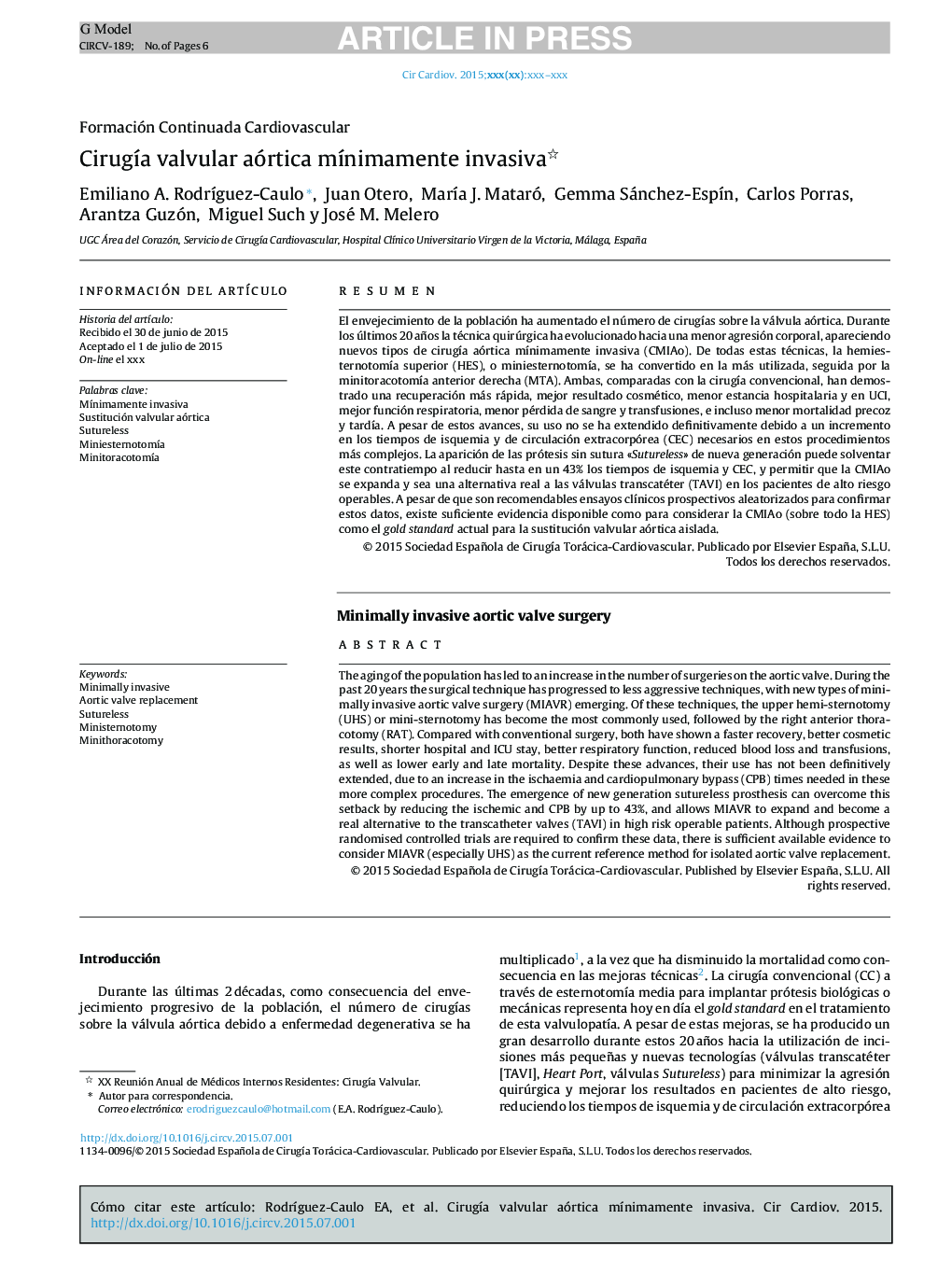| Article ID | Journal | Published Year | Pages | File Type |
|---|---|---|---|---|
| 5601308 | Cirugía Cardiovascular | 2016 | 6 Pages |
Abstract
The aging of the population has led to an increase in the number of surgeries on the aortic valve. During the past 20Â years the surgical technique has progressed to less aggressive techniques, with new types of minimally invasive aortic valve surgery (MIAVR) emerging. Of these techniques, the upper hemi-sternotomy (UHS) or mini-sternotomy has become the most commonly used, followed by the right anterior thoracotomy (RAT). Compared with conventional surgery, both have shown a faster recovery, better cosmetic results, shorter hospital and ICU stay, better respiratory function, reduced blood loss and transfusions, as well as lower early and late mortality. Despite these advances, their use has not been definitively extended, due to an increase in the ischaemia and cardiopulmonary bypass (CPB) times needed in these more complex procedures. The emergence of new generation sutureless prosthesis can overcome this setback by reducing the ischemic and CPB by up to 43%, and allows MIAVR to expand and become a real alternative to the transcatheter valves (TAVI) in high risk operable patients. Although prospective randomised controlled trials are required to confirm these data, there is sufficient available evidence to consider MIAVR (especially UHS) as the current reference method for isolated aortic valve replacement.
Keywords
Related Topics
Health Sciences
Medicine and Dentistry
Cardiology and Cardiovascular Medicine
Authors
Emiliano A. RodrÃguez-Caulo, Juan Otero, MarÃa J. Mataró, Gemma Sánchez-EspÃn, Carlos Porras, Arantza Guzón, Miguel Such, José M. Melero,
